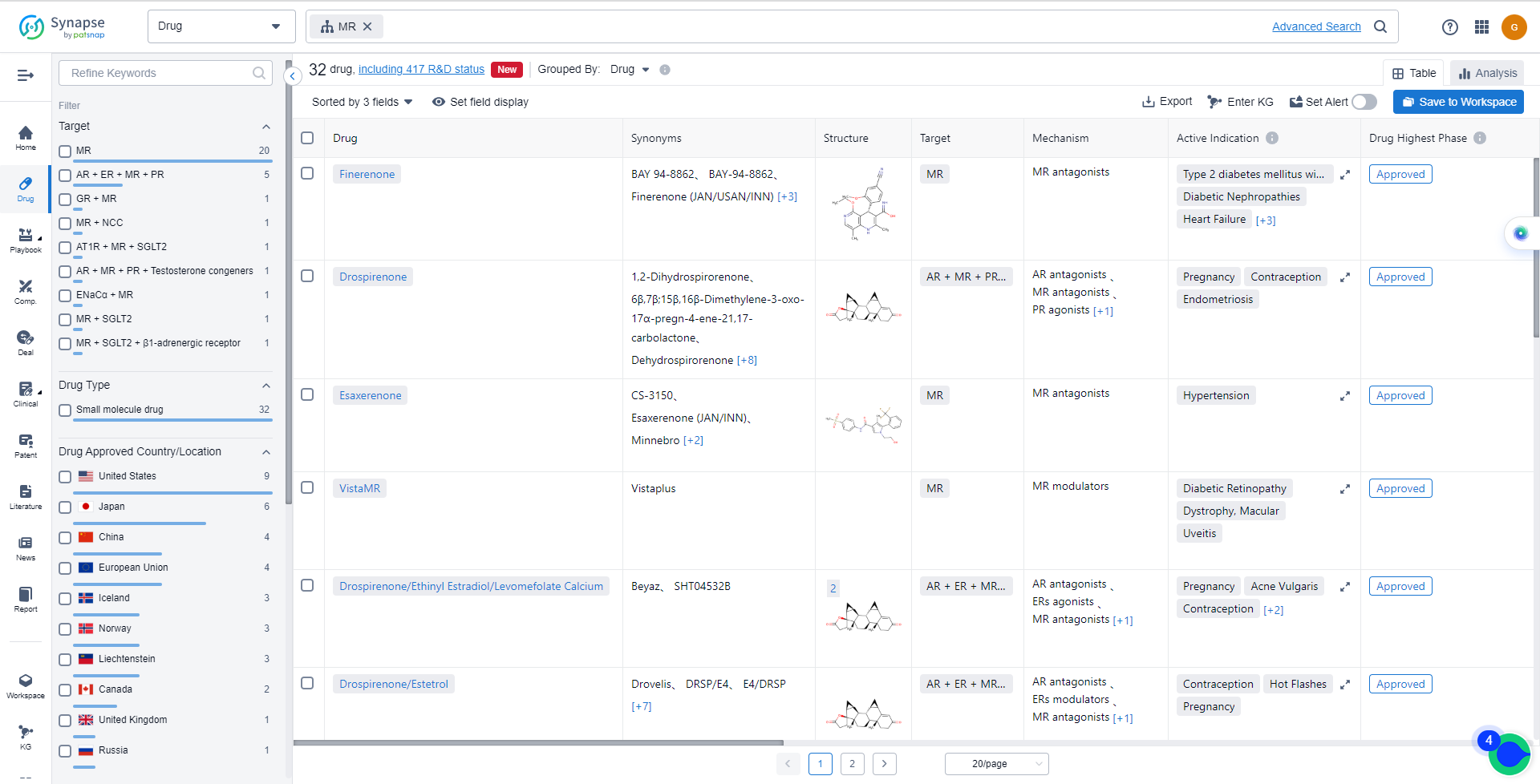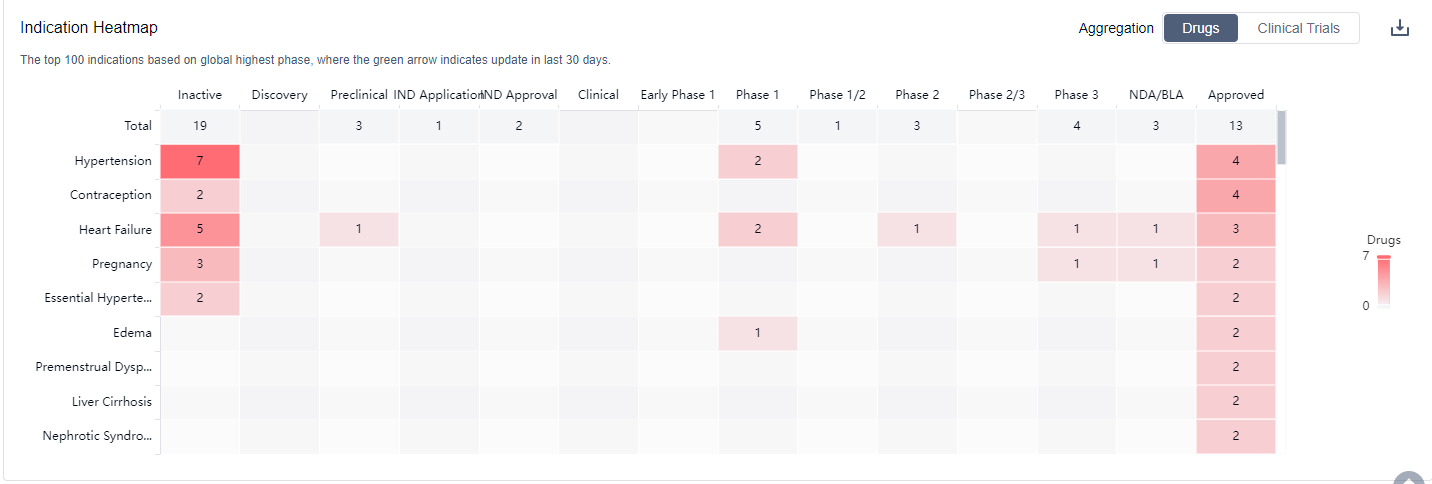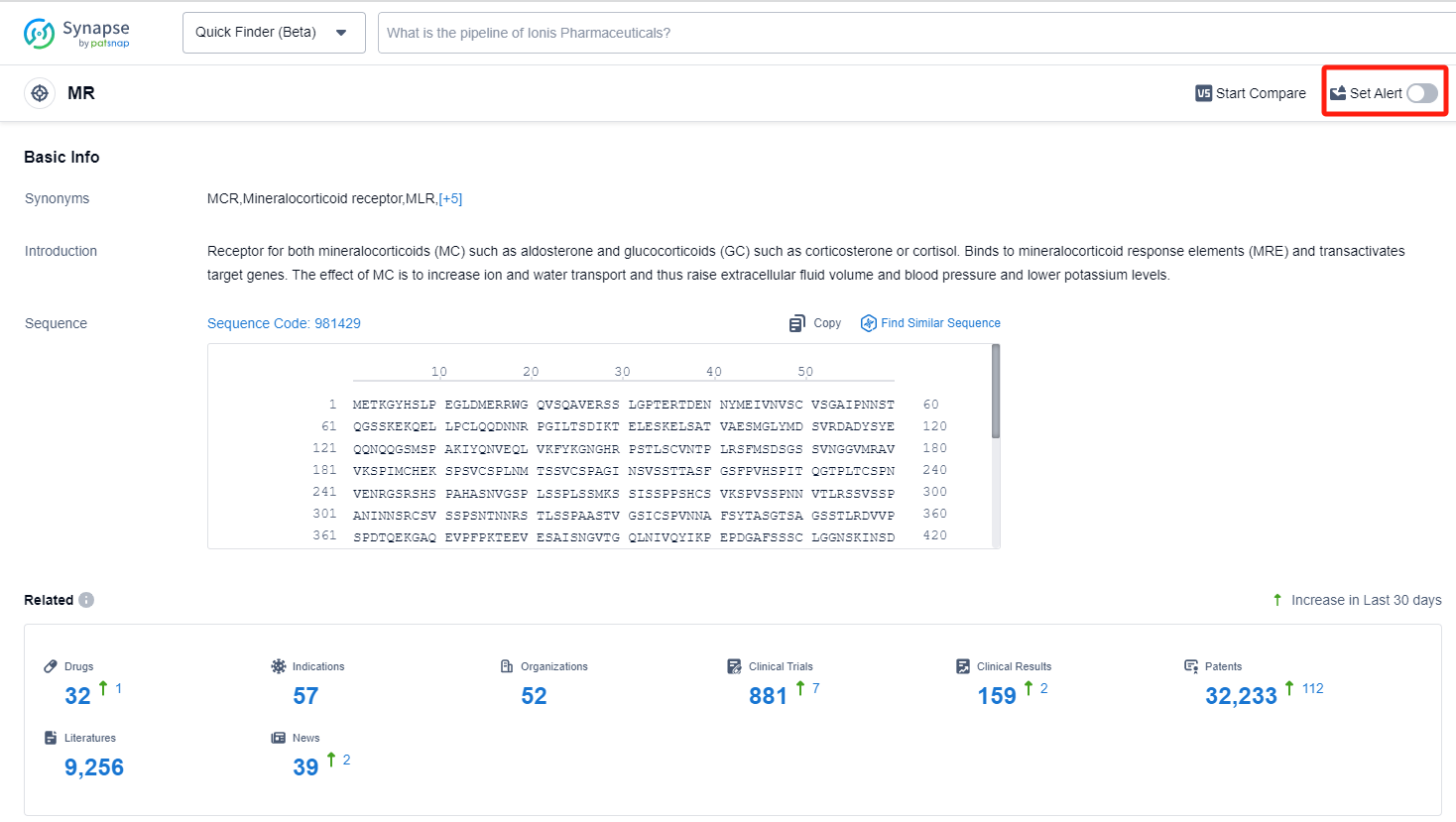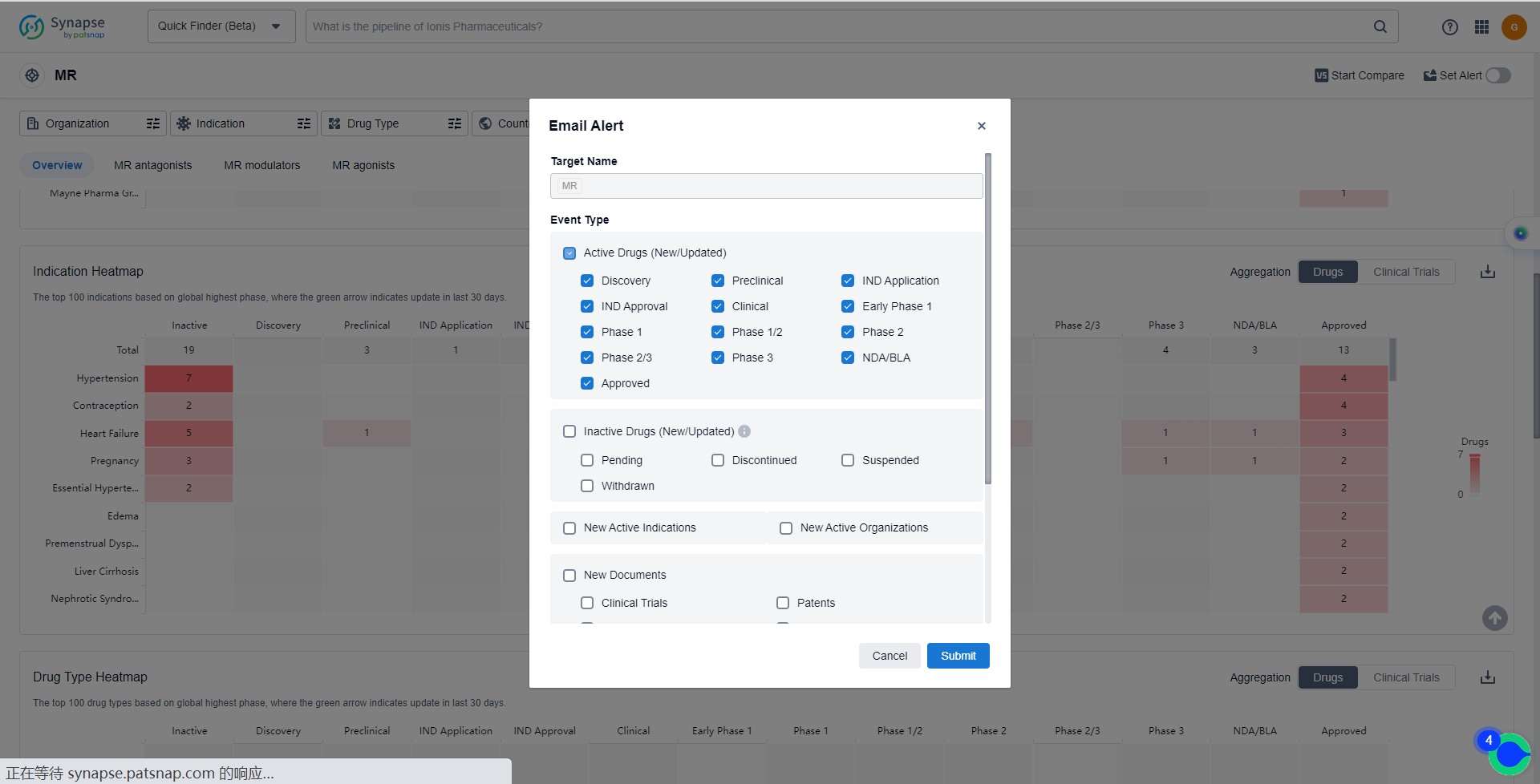Exploring MR antagonists: What They Are and How to Keep Up with the Latest Advances
The role of the MR (Mineralocorticoid Receptor) in the human body is crucial for maintaining electrolyte and fluid balance. MR is a type of receptor found in various tissues, including the kidneys, heart, and brain. When activated by the hormone aldosterone, MR regulates the reabsorption of sodium and water in the kidneys, leading to increased blood volume and blood pressure. This receptor also plays a role in regulating potassium levels and maintaining the balance of electrolytes. Dysfunction of the MR can lead to conditions such as hypertension, electrolyte imbalances, and cardiovascular diseases. Understanding the role of MR is essential for developing targeted therapies in the pharmaceutical industry.
Based on the analysis of the target MR, it is evident that Bayer AG and Pfizer Inc. are among the companies growing fastest in this field. The R&D progress of these companies, along with oOh!media Group Pty Ltd., Daiichi Sankyo Co., Ltd., CMP Development LLC, Estetra SPRL, and China National Pharmaceutical Group Co., Ltd., is promising. The approved indications cover a wide range of therapeutic areas, indicating the diversity of research in the target MR. Small molecule drugs dominate the development phases, suggesting intense competition in this area. The involvement of various countries/locations, including China, highlights the global nature of the target MR. Overall, the current competitive landscape indicates a promising future for the development of drugs under the target MR.
How do they work?
MR antagonists, also known as mineralocorticoid receptor antagonists, are a class of drugs that block the action of the mineralocorticoid receptor. The mineralocorticoid receptor is a protein found in various tissues, including the kidney, heart, and brain, and it plays a crucial role in regulating electrolyte balance and blood pressure.
From a biomedical perspective, MR antagonists are primarily used in the treatment of conditions such as hypertension (high blood pressure) and heart failure. By blocking the mineralocorticoid receptor, these drugs inhibit the effects of aldosterone, a hormone that promotes sodium and water retention and potassium excretion. This leads to a reduction in fluid volume and blood pressure, helping to manage hypertension and improve symptoms in heart failure patients.
Common examples of MR antagonists include spironolactone and eplerenone. These drugs are typically prescribed in combination with other medications to optimize blood pressure control and manage fluid balance in patients with cardiovascular disorders.
It's important to note that MR antagonists should be used under medical supervision, as they can have potential side effects and interactions with other medications. Close monitoring of electrolyte levels, particularly potassium, is necessary during treatment with MR antagonists to prevent imbalances.
List of MR Antagonists
The currently marketed MR antagonists include:
- Finerenone
- Drospirenone
- Esaxerenone
- VistaMR
- Drospirenone/Ethinyl Estradiol/Levomefolate Calcium
- Drospirenone/Estetrol
- Drospirenone/Estradiol
- Eplerenone
- Drospirenone/Ethinyl Estradiol
- Fludrocortisone Acetate
For more information, please click on the image below.
What are MR antagonists used for?
MR antagonists are primarily used in the treatment of conditions such as hypertension (high blood pressure) and heart failure. For more information, please click on the image below to log in and search.
How to obtain the latest development progress of MR antagonists?
In the Synapse database, you can keep abreast of the latest research and development advances of MR antagonists anywhere and anytime, daily or weekly, through the "Set Alert" function. Click on the image below to embark on a brand new journey of drug discovery!








